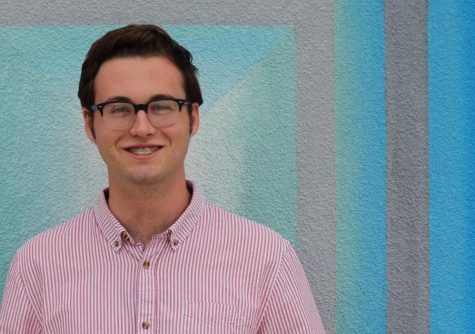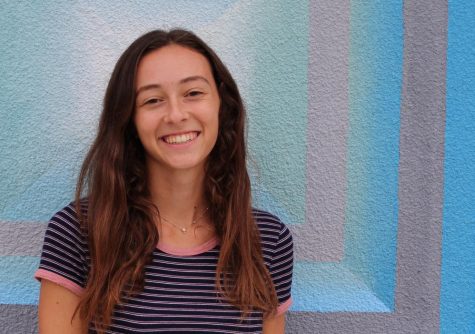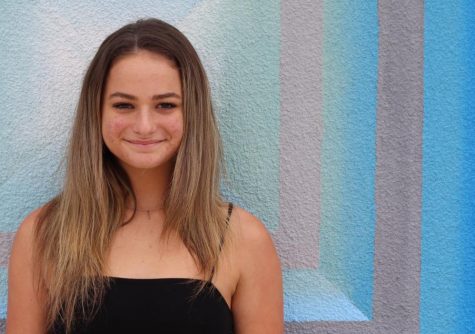Your donation will support the student journalists of Carlsbad High School. Your contribution will allow us to purchase equipment and cover our annual website hosting costs.




November 9, 2018
With the ubiquity of JUULs and marijuana, drugs are commonplace in the life of a modern teen. We decided to look into the impact of illegal substances on teenagers and the role they play in our lives.
For decades teens have abused illegal substances and the adults in their lives have tried to stop them. These efforts have taken many forms and are usually characterized by harsh punishments and information campaigns centered around fear. While still taking a zero tolerance approach, the school administration prefers a different method: building relationships and engaging with students.
Education is a large aspect of the fight against illegal substances on campus. Administrators aim to prevent students from consuming drugs, alcohol or nicotine through informing and engaging with them.
“We want to educate students about the risks that are involved,” Principal Brian Brockett, PhD, said. “Drug use is not so much a school issue as it is a community and societal issue. So we’re kind of a microcosm of what happens in the wider community. We want to educate kids and help them understand what the risks are and certainly encourage students to stay away from drugs and drug use. That covers both illegal drugs as well as the abuse of prescription medications.”
Education is a very effective tool, according to Brockett, but it does not always work. When a student is caught in possesion or under the influence of an illegal substance, an investigation is held and the student is suspended. The process does not end with punishment, however. The administrators engage with the student and their family and aid them in seeking the help they need.
“We try to engage the students in resources and interventions,” Assistant Principal Julie Redfield said. “We talk to kids all the time about preventative measures. So even if the kids have a first time offense we will call them in periodically to say, ‘Hey, how’s it going? Have you been involved in your counseling?’ We try to get them the help they need so we don’t have a second offense.”
According to Redfield, these follow-ups are important in helping the students make healthier decisions and prevent future infractions.
“It’s pretty effective,” Redfield said. “We don’t have many second-timers. The more we can engage with the kids and build that relationship with the students and telling them, ‘We all make mistakes but we have to learn from those mistakes when we make them’ and try to really stay focused on what their goal is in life and what direction they want to go in because if they continue their behaviors that direction is going to be obscured and they will go down a path they probably didn’t expect.”
Redfield also thinks that as an administrator, being visible on campus is an important part of fighting this issue. Being engaged and active in students lives is a vital role in her and her colleague’s jobs.
“Being visible and talking to kids on a daily basis is I think very important,” Redfield said. “Us being out and about and seeing what kids are doing and just having conversations about ‘how was your weekend?’ you know, ‘what did you do?’. Really engaging with the kids and encouraging them to get involved in school, extracurricular activities, go to football games, just stay active.”
Brockett believes in the necessity of visibility as well.
“I’m a big believer in the value and power of relationships,” Brockett said. “I think that we have a phenomenal student body here of really great young people who have good plans ahead of them, who are really working hard to make things happen. I think that where we as adults are present in students’ lives and out and about on campus is building those relationships up. I think that’s a buffer in a lot of ways for students being susceptible to making bad decisions.”
Through building relationships and engaging with students, the administration aims to prevent and effectively handle the problem of illegal substances on campus. While it is nearly impossible to eliminate this problem entirely, Brockett is hopeful for the future.
“We continue forward and we try different things and we continue to see a lot of the same issues and that’s tough, that can be frustrating,” Brockett said. “I always take the long view, though. I think the more we continue to do those kinds of things, like building relationships and positive environments, I’m hopeful that we get to a point where at least we’re minimizing the problem if not eliminating it all together.”
Warning me of the AP workload, one of the first things my sister told me before I entered freshmen year was that some students turn to unprescribed adderall just to focus on their homework.
The fact that high schoolers feel so much stress and pressure that they become dependent on drugs cannot be ignored, as stressed-out teens are twice as likely to do drugs than other teens. On the other end of the spectrum, teens who are frequently bored and uninvolved in school activities are also more likely to do drugs than other teens. These factors leave it up to students to determine a healthy balance, despite their current situations.
But how can we expect students to always make the right choice for their health when they are continuously being pushed to work harder and harder? Currently, some students accept this academic challenge — soon realizing it’s too much stress — while other students back away from the challenge and instead, are discouraged to work hard in school at all. Either way results in a negative high school experience, as about two-thirds of depressed teens also struggle with substance abuse. Thus, education in schools needs to be tailored to modern day struggles of high schoolers, such as social and academic pressure. Otherwise, mere warnings, punishments and drug prevention assemblies will continue to be shrugged off.
The consequences that come with doing drugs often compel students to dismiss any possibility of changing their habits. The fear of being punished by the school, parents/guardians and police officers puts pressure on teens to be secretive and burden their struggles on their own. Although these punishments are necessary, what’s more important is actually preventing these problems from happening in the first place. Truly caring about this issue would require solving the problems that directly cause students to turn to drugs.
Right now, drug reliance is most likely caused by emotional issues and stress. Teens therefore justify drug use to themselves by believing it helps them cope with anxiety and depression. The seriousness of this epidemic grows, as only 30 percent of depressed teens are receiving professional treatment.
By forming a greater connection among counselors, teachers and students, our school will make drug treatment and prevention more accessible to students. Schools need to understand that students must put their own health over their workload. Do not just claim that stressed-out students shouldn’t take advanced classes. Instead, recognize that this challenge may result in horrible drug habits if students don’t learn how to properly handle stressful situations.
An alarming amount of students live with loneliness, depression and anxiety, but instead of looking for professional help they keep their head down and do whatever it takes to get their work done. Without support from their school, teens will continue to feel discouraged, as if they should give up on their education as a whole.
When working toward drug prevention, schools must know their audience: modern teenagers. It’s saddening to see people at my school fall into friend groups that make drugs a focal point in their social lives, just to ignore the emotional burdens that most of them are carrying. High schoolers are just trying to support each other through the rigor of classes and the depression many of them feel, but that is not enough. Our education system must address these issues in order to create a drug-free environment for high schoolers.
We live in a society that has never really done anything to stop the problem of addiction. In fact, drug use is almost encouraged amongst a particular group: teenagers. We are constantly exposed to drugs, we know how to get them, and are almost brainwashed to crave the high they provide.The media is no stranger to promoting drugs, whether it be in an Instagram post or a song that plays in a loop on the radio. There is absolutely no way to escape it.
The harsh reality of it all is that trying something just once and getting hooked on it is incredibly common within youth. According to The Addiction Center, “Approximately 20 percent of 12th graders reported binge drinking in 2014. Nearly 40 percent had used alcohol in the last month.” The statistics demonstrate that there is a problem within youth and no one is doing anything about it. I understand that there is absolutely no physical way to stop teenagers from drinking, but drinking at a party and drinking with the goal of blacking out are two very different things. High school students are exposed to alcohol in a very critical period of their life resulting in many individuals seeing alcohol as an escape and blatantly ignoring the long term consequences.
Our generation has grown up around technology and as it advances, so does the lack of control over what young people are buying. It is easy to access sites that sell e-cigarettes and it is not hard to buy them, so it is no surprise that there has been a rise in teenage use. Many students at Carlsbad High School are not strangers to walking into the bathroom and seeing our peers hitting Juuls, a new type of cigarette that comes with new types of consequences. Most teens are given the impression that these new e-cigarettes and vapes are less toxic to their bodies, but these brands don’t care about their consumers, only the money they are making off of 16-year-olds.
The fact of the matter is that a majority of students, especially at CHS, are so dependent on Juuls or mods that they have to leave an English class to hit it in the bathroom. It may seem almost comical when freshmen are seen doing such things but this is the truth, the truth that has made itself clear in high schools all over the U.S. According to Initiativetruth.org, “One Juul pod contains twenty cigarettes worth of nicotine.” This contradicts the promise that these new cigarettes are not as dangerous.
For a student in high school, ages where our brains are not yet done developing, putting nicotine and alcohol in our bodies is a form of self-destruction. We are simply left waiting to see how these things that are deemed as “fun” right now will affect our health in the future. It is up to us to educate not only ourselves and others on what we are putting in our bodies, but also understand that this is an issue that can be resolved. There is help for those who seek it out and there are other students who will fully understand.
The relationship between drugs and the entertainment industry is no foreign matter. For decades, celebrity drug addictions and controversial scenes in TV and movies have been hitting the tabloids. Some scenes highlight the dangers of drugs, while many almost seem to encourage it. Today, young kids and teens are highly influenced by what is around them. They always are seeing new headlines about the latest celebrity going to rehab or their favorite TV show doing an episode centered around drugs. Drugs and their abuse is constantly a topic of concern, especially when it is so prevalent in the entertainment industry.
As soon as word hits social media that a celebrity has gone to rehab, fans are filled with several emotions; confusion, disbelief, sadness, or even disappointment that the person they listened to on the radio growing up had taken such a bad turn. However, what is sometimes forgotten is that celebrities are people too. They have their own personal issues that they deal with; add being in the spotlight all the time to this and going down the wrong path becomes more common than once thought. Junior Reagan Phillips has seen this happen with one star in particular, Demi Lovato, who she has watched on TV ever since she was a kid.
“It is definitely weird to see her go to rehab again,” Phillips said. “She was someone I always watched and listened to as a kid so to see her going through something like this is really sad. She has been an advocate for sobriety for so long that you sometimes forget a relapse is even possible.”
It is also common to forget that even if celebrities make wrong decisions, it does not necessarily make them bad people. They can still inspire people, but maybe in a different way. Watching stars go through rough patches with drugs can make them be seen as more relatable. They are now more humanized, rather than a perfect person with thousands of likes on all of their Instagram pictures.
“It makes you realize that celebrities are normal people too,” Phillips said. “I still consider her someone to look up to since she is so open about her journey. It takes a lot to be as open as she is about what she has gone through, but I bet she is helping so many people because of it.”
Not only do stars have their fair share of drug related problems, but the characters they play can be involved in the issue as well. For example, the show “Gossip Girl” is about a group of teens who live a champagne lifestyle in the Upper East Side. Although the show is not centered around drugs, it is a casual topic that is brought up throughout all the seasons of this very popular and well known show. The show paints drugs as something “typical” for teens to do instead of a very dangerous subject that should be taken seriously. Junior Hailee Harway has seen all the episodes of the show, and never really took a second glance at the use of drugs in the show.
“I never really noticed how casually they used drugs and brought it up,” Harway said. “I just thought it was something normal, not really thinking much of it. I don’t think it influences me negatively, but I can definitely see how some people can see it as something normal to do because of the show.”
Drugs are extremely prevalent in the entertainment industry. Sometimes shows use it to express the dangers and others normalize the topic to make it a casual thing to be involved in. Adolescents being exposed to drugs can be widely related to the TV or music they listen to, or even the stars they choose to follow on social media. It is a topic that is nowhere near being done talked about; using social media and other entertainment outlets to show the dangers can turn the negative situation into something more positive.
Your donation will support the student journalists of Carlsbad High School. Your contribution will allow us to purchase equipment and cover our annual website hosting costs.



